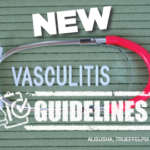The guidelines themselves provide a great deal of information about why the voting panel decided as they did on a particular recommendation to make a more in-depth understanding of these questions available to guideline readers. The supplementary appendices to recent guidelines also provide further information about evidence and the specific studies used to make recommendations for each PICO question.
Awareness of the Evidence Base for ACR Guidelines
In recent years, there has been a growing push to develop standards for more rigorously developed clinical practice guidelines.4 With this has come a greater scrutiny of the evidence base for guidelines and a greater awareness that many recommendations across medical specialties are not based on evidence from randomized controlled trials, which is sometimes characterized as level A evidence.5,13-15 In general, there seems to be a push toward level A (the highest level) evidence from many areas of the medical community. Just what the evidence base means for clinical medicine on a practical level is not completely clear, although it seems obvious that greater scientific certainty is desirable.
The traditional evidence-based pyramid became well known in the 1990s as a tool to evaluate the level of evidence. Certain types of studies are given greater weight in this hierarchy, increasing from case series, to case control studies, to cohort studies. Randomized controlled trials (RCTs) are given even greater weight, with systematic reviews or meta-analyses traditionally pictured at the top of the evidence pyramid.16
Various organizations have adopted frameworks to quantify this pyramid of evidence. A hierarchy adopted by the American College of Cardiology/American Heart Association (ACC/AHA) categorizes the evidence of a recommendation into three levels. Level A grading is assigned to recommendations supported by more than one randomized clinical trial or one or more meta-analyses; level B grading is assigned to recommendations based on a single randomized trial or nonrandomized trials; level C grading is given to recommendations based on expert opinion, case studies or standard of care.17 The ACR also reported these evidence levels as described by the ACC/AHA in pre-GRADE guidelines, such as the 2012 gout guideline.
Some researchers have pointed out that the evidence base crosses medical specialties and have urged improvement in the evidence base used to support guideline recommendations. For example, a recent research letter in JAMA Internal Medicine critiqued the level of evidence used in compiling the ACR’s clinical practice guidelines. The authors recategorized the ACR recommendations based on ACC/AHA levels of evidence (A, B and C). In their analysis, they reported that the ACR guidelines “remain mostly expert-based but are comparable with guidelines in other subspecialties.”18



